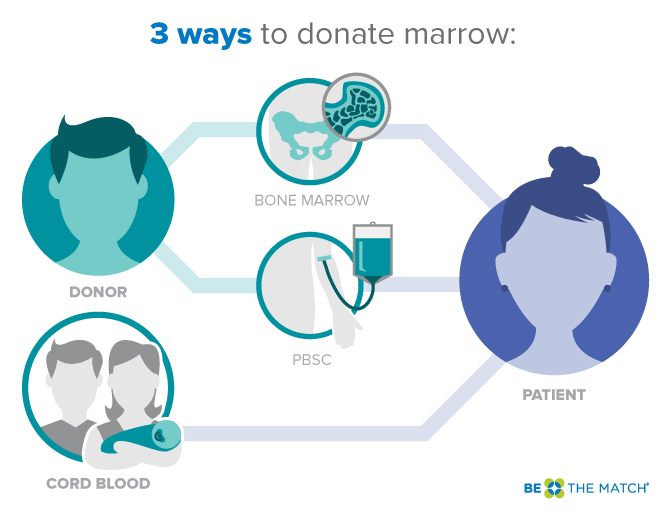 |
| Donating is simpler than you think. |
Type of Bone Marrow Donations
Peripheral Blood Stem Cells (PBSC)
The most common type of bone marrow donation is actually a stem cell donation. It's a non-surgical procedure called apheresis, which is similar to donating blood or platelets.If you're a match for a person in need, you'll receive five injections of filgrastim over the course of five days (one injection a day) to boost your stem cell production. The first and last injections are administered at a doctor's office, but a nurse can come to your home or office to administer the other ones. From what I've read, the injections themselves do not hurt more than a flu shot.
You receive the last injection on the day that you donate your stem cells. After the injection, you're hooked up to an apheresis machine. The machine collects your blood, separates the blood-forming cells (stem cells) from your other cells, and returns the remaining blood to you. The process is similar to a platelet, plasma or double red blood cell donation.
The actual donation process takes about a day, or up to 8 hours. Depending on the time of day that your donation starts, you may donate over the course of two days.
Check out the video to learn about Jeff's donation experience.
Bone Marrow Donation
I've learned that it is rare to donate actual bone marrow. The donation procedure is an outpatient procedure that involves puncturing the back of either side of your pelvic bone with a needle that collects the liquid marrow from inside the bone. The liquid marrow contains the stem cells that the patient needs.Before the procedure, a doctor gives you general anesthesia so you feel no pain at all. You may also receive a prescription for pain medication for after the procedure. On rare occasions, a person who donates stays in the hospital overnight for observation.
My sister, who has leukemia and needs a bone marrow/stem cell transplant, has regular bone marrow biopsies to monitor the growth of the cancer cells. The biopsy procedure is similar to the donation procedure, but she receives local anesthesia, which doesn't put her to sleep. She then takes over-the-counter medicine for the pain.
Watch the video to learn about Paul's experience.
Umbilical Cord Donation
If there are no matching donors in the database, a patient may receive a stem cell transplant from an umbilical cord's blood.When parents donate a baby's umbilical cord, doctors freeze and store the cord blood until it's needed. Children who need a transplant usually need one unit of cord blood, while adults need two or three units of cord blood, which requires donations from multiple donors.
Cord blood donation is painless for a newborn and the baby's information remains anonymous.
Learn more about the different donation methods.
Donors Don't Pay to Donate!
If you are a match for a person in need and are signed up with Be the Match, you don't have to worry about any donation-related expenses, including:- Medical expenses
- Airfare
- Hotels
- Car rentals
- Meals
- Mileage
Check out this post to learn more about how to become a bone marrow donor.
If you're ready to sign up for the registry, go to the Be the Match website.
I'm in the registry and am ready to save a life. Are you?

No comments:
Post a Comment